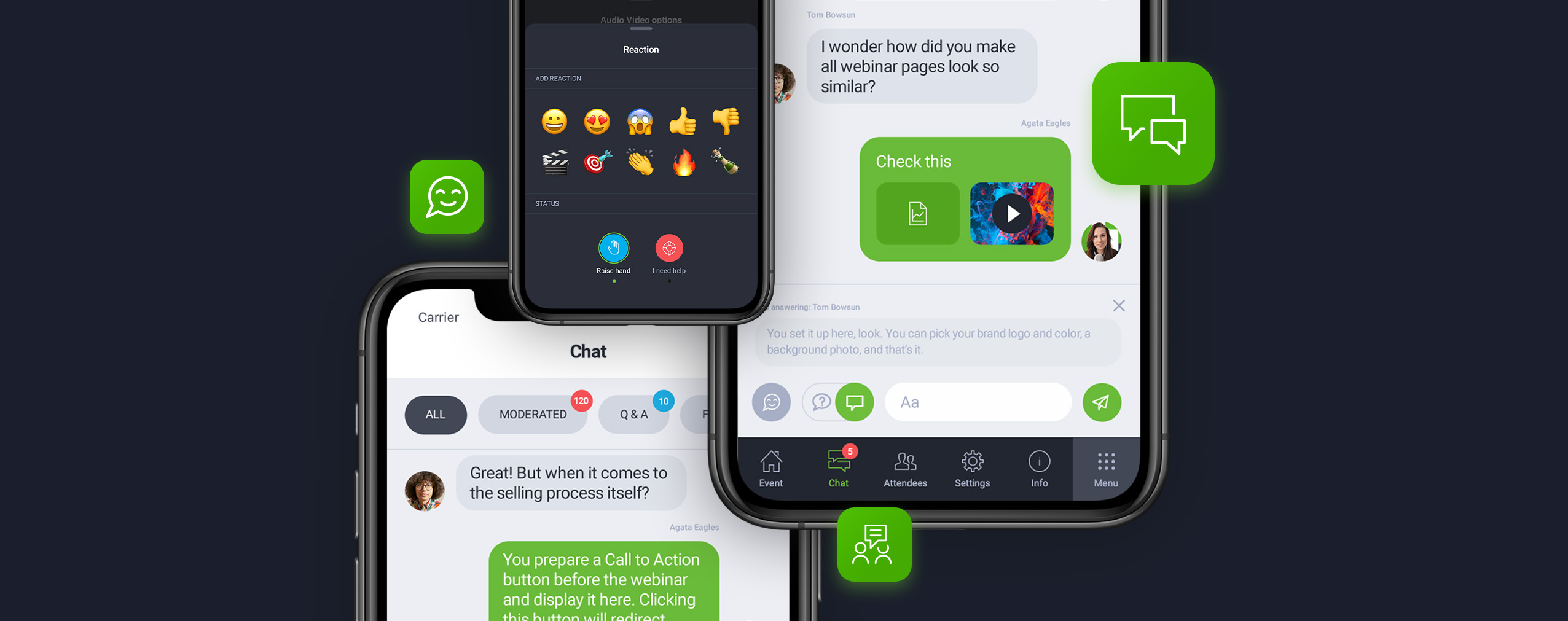Did you know that glossophobia, AKA the fear of public speaking, is one of the most common phobias? Research suggests that 74% of Americans are afraid to speak in public.
But the truth is public speaking doesn’t have to be scary! As long as you avoid a few common public speaking mistakes, your next presentation should go just fine. Keep reading to learn 10 things you should NOT do when speaking in public.
Table of Contents
Public Speaking Mistakes to Avoid
Ready to become a better public speaker? Of course, you are! Thankfully, that’s what this article is all about. Do your best to avoid these 10 common public speaking mistakes and your work presentations, industry conference keynotes, etc. will improve.
1. Neglecting to Prepare
Neglecting to prepare is one of the most common public speaking mistakes. Fortunately, it’s also one of the easiest to remedy! All you have to do is set aside time before your presentation, speech, etc. to ensure you’ve worked out all the kinks.
Here are a few tips to help you prepare:
-
Consider Your Audience. It’s really difficult (read: nearly impossible) to create an effective presentation if you don’t know who you’ll be giving it to. Think about your audience and tailor your message to them and their specific needs.
-
Organize Your Presentation. Next, make sure your presentation flows in a logical and engaging way so that your audience can easily follow along. You never want your audience to think, “Woah, where did that point come from?”
-
Practice, Practice, Practice. Lastly, practice your presentation numerous times before you deliver it. If you’re able to, consider recording yourself so that you can see how you appear to your audience. Once you know your presentation like the back of your hand, you’ll be able to deliver it in a much more engaging way.
Winging it is NOT a professional approach to public speaking. Do yourself (and your audience) a favor and always commit to preparing for your presentations.
2. Using Filler Words
Filler words are a public speaker’s arch-nemesis. You know what we’re talking about: the ums and uhs that plague most inexperienced speakers. These words (and others like them) will only serve to make you look unprepared and unprofessional during your presentation. They’ll also lower your audience’s confidence in the information you deliver.
But don’t worry! The best remedy for filler words is to make sure you’re fully prepared before speaking. When you practice your speech, you’ll be able to deliver it more effortlessly.
We want to remind you that the occasional “um” is totally fine. They can actually make your presentation feel more natural, and therefore more engaging. Just don’t let them run rampant throughout your speech or you’ll start to have issues.
3. Talking Too Fast
As mentioned earlier, most of us are afraid of public speaking. So, we get pretty nervous whenever we have to deliver a presentation in front of an audience. This leads to another common public speaking mistake: Talking too fast.
If you approach your next keynote speech like a runaway train, you’ll confuse your audience. Confused audience members are notorious for tuning out completely—not what you want.
One way to keep yourself from rushing through your content is to practice your presentation at the proper speed. (Funny how we keep harping on preparation, right?) Then, take deep breaths during your speech to calm your nerves and keep them in check.
Another tip is to pause after you’ve said something important or when transitioning from one topic to the next. This will give your audience time to soak up what you’ve just shared.
4. Talking Too Softly
Talking too fast is definitely a public speaking mistake you want to avoid. And so is talking too softly. Especially if a microphone isn’t available for you to use.
Your audience won’t be able to internalize the wisdom you share if they can’t hear what you’re saying. So, make sure you speak loudly, enunciate well, and avoid mumbling at all costs. This will ensure your message is understood while giving you a confident appearance on stage.
Similarly, talking in a monotone voice during your presentation is also discouraged. Why? Because it’s boring and will likely lull your audience to sleep. Don’t be afraid to add inflections to your voice, emphasize important words, etc. This will help engage your listeners.
The best way to avoid monotony is to pump up the energy. We’ll talk more about this in a later section of this article, so sit tight.
5. Forgetting to Make Eye Contact
If public speaking makes you nervous, the thought of making eye contact with your audience while you deliver your presentation probably makes you break out in a cold sweat.
But eye contact is essential to an effective presentation which is why not committing to it is one of the biggest public speaking mistakes you can make. If you don’t take the time to look your audience in the eyes, you’ll come across as insincere, detached, and arrogant.
So, bite the bullet and give your audience the eye contact they deserve. As you speak, focus on one listener for about three to five seconds. Then move onto another person for the same amount of time. This strategy will help you easily engage your entire crowd.
6. Using Distracting Mannerisms
When you speak to your audience you want them to focus on the information you’re delivering, right? That’s the whole point of your presentation. Unfortunately, many speakers distract their audience with mannerisms such as:
- Clenching or wringing hands;
- Pacing back and forth;
- Gripping the podium;
- Adjusting hair or clothing;
- Touching the face.
If you do any of these things on stage, your audience will have a hard time concentrating and your presentation will be much less effective than it could be.
To see if you commit any of these mannerisms, record yourself speaking and watch the replay. Then recognize the public speaking mistakes you see and make a mental note to fix them. The more you do this, the less prone you’ll be to distracting mannerisms.
7. Having Low Energy
Earlier we said that pumping up the energy can be beneficial during your presentation. In fact, having low energy is a common public speaking mistake that you should try to avoid.
Now, we’re not suggesting you chug a pot of coffee before you speak. You don’t want to be unnaturally hyper – you want to be energetic which will help audience members engage. Think about it, why would anyone listen to what you have to say if you’re not even excited about it?
To improve your energy levels, remember to speak with passion, enjoy the moment, smile and make other positive facial expressions, and move about the stage in a natural way.
8. Misusing Visual Aids
The best speakers use visual aids such as videos, charts, and graphs to bring their presentations to life and engage their audiences. You should do the same. To use visual aids effectively during your next speech, keep these things in mind:
- Don’t Overload on Text. Super text-heavy slides require audiences to read which will distract them from the words coming out of your mouth.
-
Don’t Skimp on Design. Poorly designed slides can be a distraction as well. Make sure your visuals look professional and project a positive image.
-
Don’t Rely on Visuals. What if your technology breaks? If you can’t deliver an effective presentation without slides, rework your speech.
Visual aids can make a good speech absolutely amazing and memorable. But you have to use them correctly. The above tips will make sure you do.
9. Sharing Too Much Information
You may be tempted to share too much information during your presentation. This is known as data dumping and is a common public speaking mistake.
We get it. You feel like your credibility is on the line every time you deliver a speech. So, you try to include a mountain of information during your presentation to make sure your audience understands that you know what you’re talking about and deserve to speak to them.
This is a mistake and will only serve to overwhelm your audience. Instead, think about the few things you absolutely need them to know by the end of your presentation. Then focus your speech on just these things. Leave everything else on the cutting room floor.
10. Overshooting Your Time
The final public speaking mistake we’ll cover is overshooting your time. If your boss gives you 15 minutes to present your new idea, stick to 15 minutes. If an industry conference asks you to deliver a 45-minute keynote, make sure your speech doesn’t exceed your time limit.
Overshooting your time is not only rude but also unwise. The longer your presentation goes, the harder it will be to keep your audience engaged. Especially if they expected a 30-minute talk and you unload a two-hour lecture on them.
Know the time allotted to you, then craft content to fit. The easiest way to do this is to time yourself while you practice your presentation. If you consistently go long, cut back on material.
Become a Better Public Speaker
The first step towards becoming a better public speaker is awareness. You have to be aware of your speaking flaws before you can improve them.
We encourage you to read back through this post, then give yourself an honest assessment. What can you do better when it comes to public speaking? Once you’ve identified your flaws, work to improve them every time you deliver a new presentation and/or speech.
Speaking of presentations, have you tried ClickMeeting yet? Our platform is specifically designed to host world-class webinars, productive team meetings, and huge online events. Give it a try for free for 14 days to see if it’s the right tool for you and your company.



 (10 votes, average: 4.50 out of 5)
(10 votes, average: 4.50 out of 5)




